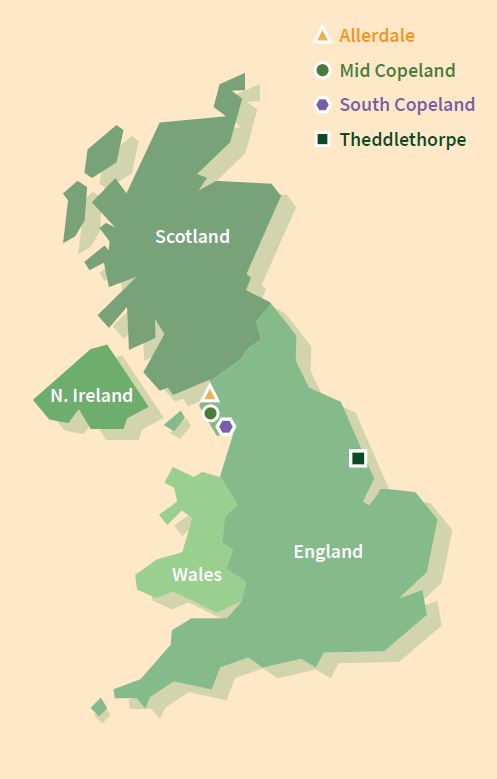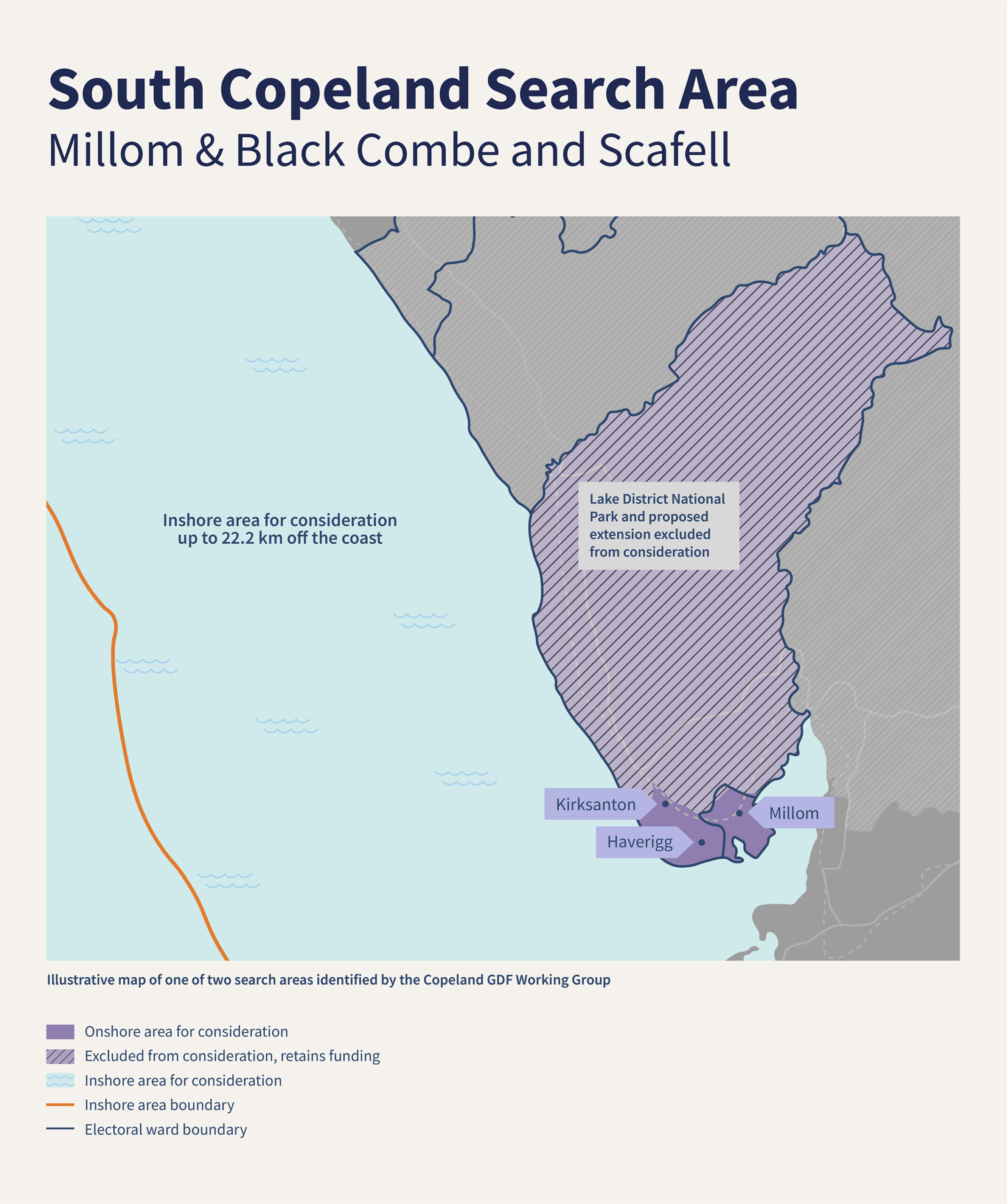In our recent resident research, it was clear that our community needed more information across a number of areas. This ranged from specific information on what a Geological Disposal Facility (GDF) is and where nuclear waste is currently stored to broader subjects including safety, environmental protection, transportation of the waste, local economic impact and impact on future generations. The below provides some initial insight into geological disposal and why the UK Government is looking for a suitable and willing location in which to build a GDF. The Community Partnership are aiming to open up the conversation across the latter broader subject areas as we move forward.
We hope you find this fact sheet useful and if you have any questions you can always get in touch or attend one of our Community Partnership meetings and events.
What is a Geological Disposal Facility (GDF)?
Geological disposal involves isolating radioactive waste deep underground, inside a suitable rock volume to ensure that no harmful quantities of radioactivity ever reach the surface environment. A GDF will be a highly engineered structure consisting of multiple barriers that will provide protection to people and the environment over hundreds of thousands of years whilst the radioactivity fades away naturally. This will be at a depth of between 200 and 1,000 metres.
Has any region been selected for a GDF?
No host site for a GDF has been identified and discussions are happening with communities around England and Wales. Working Groups and Community Partnerships are being formed in different areas of the country to start exploring whether a GDF is right for their area and whether their area is right for a GDF. This is a consent-based approach with Right of Withdrawal by the community right up to a Test of Public Support. Without suitable geology, community consent, and confirmation from the regulators – The Office for Nuclear Regulation and the Environment Agency – that designs for a GDF, the proposed site, and the science that informs them are safe for people and the environment, the project will not go ahead.

Have other countries implemented geological disposal?
Geological disposal is internationally recognised as the best and safest option for managing longer-lived, more hazardous radioactive waste, following decades of science, technology and engineering research. A number of countries, including Sweden, Finland, France, Canada and Switzerland, have already implemented or are developing plans for this process. Among the most advanced is Finland which started constructing a GDF for spent nuclear fuel, called ‘Onkalo’, five years ago. In Sweden, a site at Forsmark has been identified following support by two communities, Osthammar and Oskarshamm. France has also identified a suitable site. Its waste management organisation, ANDRA, is preparing to submit applications for the Cigeo industrial geological disposal facility, located in the east of the country.

What is radioactive waste and where does it come from?
Radioactive waste is radioactive material for which there is no further use. Most comes from the generation of electricity using nuclear power but it is also a by-product of many medical and industrial processes, research and defence activities that make use of radioactivity and radioactive materials.
Where is the waste now?
Radioactive wastes that will be disposed of in a GDF are currently being packaged in specially engineered containers and stored at over 20 nuclear sites around the country. Although radioactive waste is stored at other nuclear facilities around the country, the bulk of the UK’s radioactive waste is stored above ground at Sellafield.

Why can’t we leave the waste where it is?
Surface stores, whilst designed to be safe for around 100 years, don’t provide a permanent solution. They need to be continually monitored to keep the waste secure and periodically refurbished while the radioactivity naturally decays. For some of the waste this will take many thousands of years, so even if well maintained, eventually, they will need to be replaced, or the waste moved elsewhere. Surface storage is also vulnerable to natural and human effects. It is therefore less safe than geological disposal for the long term, and would end up being much more labour intensive in the long run.
Where in South Copeland is being considered for a GDF?
The Search Area in South Copeland includes the electoral wards of Millom and Black Combe & Scafell. Search Areas have to be based on district electoral ward boundaries. The area within the Lake District National Park and proposed extension is excluded from consideration. Deep geology beyond the coast (known as the ‘inshore area’) is being considered for the siting of the underground elements of a GDF. A Marine Geophysical Survey took place off the coast earlier this summer to gather evidence about the geology in an area off the coast of Copeland and we will begin to find out the results of that survey in 2023. If, given appropriate geology and community consent, the development was to go ahead here, a 1sq km surface facility on land would provide access to a disposal area deep in the rock beyond the coast.

When will a GDF be built?
Construction will only start when a suitable site is identified, all the necessary consents and permits have been obtained and a host community has confirmed its willingness to host the facility through a Test of Public Support. This decision could take 10-15 years. It is assumed that a GDF could be available to receive the first waste in the 2040s. Filling a GDF with waste and then closing it, once full, will run into the next century.

